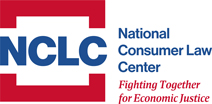The Federal Communication Commission voted to modernize the Lifeline program on March 31, 2016. This was a monumental achievement for many advocates around the country who have worked for years to modernize this critical low-income communications subsidy program.
The Lifeline program was established in the mid-1980s to connect low-income households to emergency services, jobs, healthcare, teachers, friends and family through affordable phone service. The focus of Lifeline was on access to affordable local phone service and it didn’t cover those expensive long distance calls. Communications technology has evolved over the decades and today it is broadband that is dominant communications platform.
In modern life, access to broadband is as essential for access to opportunity as electricity was in the last century. As FCC Commissioner Clyburn noted, “Broadband is the greatest equalizer of our time.” For those with the resources to afford broadband service, broadband integration in modern life has been nearly ubiquitous. Internet access has transformed the classroom and FCC Commissioner Rosenworcel eloquently noted that the “homework gap” is the cruelest part of the digital divide. From access to jobs to access to healthcare, as more aspects of modern life move online, the harmful effects of digital exclusion increase. So it is a really big deal that the Lifeline program will now include broadband as a supported service. Hurray! Now it is time to roll up our sleeves and help prepare Lifeline subscribers for the changes that are coming.
Nuts and Bolts Guide to Lifeline Changes
This is a quick summary of some of the changes to the Lifeline program that Lifeline subscribers will need to know.
- What types of service are covered? Voice-only wireline and wireless; Voice and data bundles; Broadband internet service, both fixed and mobile.
- The FCC Order phases out support for voice-only Lifeline over 5 years, but voice service is still available as part of a voice and data bundled Lifeline option.
- The FCC established minimum standards for Lifeline voice, bundles and broadband service, effective December 1, 2016. Heads up for existing wireless Lifeline subscribers: The minimum standard for wireless voice starts at 500 minutes a month and will go up annually in phases until it reaches 1000 minutes a month – I’ll share details in a future blog post.
- Over the next three years, the Lifeline eligibility determination will be changing hands from the carriers to a National Verifier. Recertifications will also move to the National Verifier.
- Starting December 1, 2016, a different set of programs will qualify a household for Lifeline support: SNAP, Medicaid, SSI, Federal Public Housing Assistance, Veterans Pensions & Survivors Pension benefit, and the same suite of Tribal Programs that currently confer eligibility. Households may still qualify for Lifeline by demonstrating income at or below 135% of the Federal Poverty Guidelines.
Register for free webinars: The Universal Services Administrative Company (USAC.org) administers the Lifeline program and will implement these new program changes. USAC is sponsoring a series of free webinars on the new program. The next one is June 8. Register or view archived webinars.
There will be opportunities to weigh in and help with the implementation and outreach. Please stay tuned for more information. Congratulations and thank you, everyone. Rest up because we have a lot of good work ahead of us!
